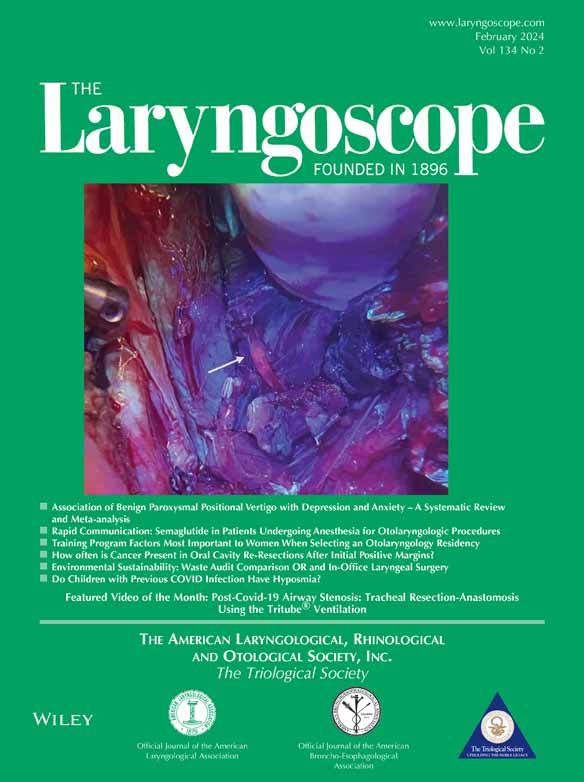Implementation and Outcomes of ERAS Protocol for Major Oncologic Head and Neck Surgery
The authors have no funding, financial relationships, or conflicts of interest to disclose.
Abstract
Background
Enhanced Recovery After Surgery (ERAS) protocols have been developed and successfully implemented for many surgical specialties, demonstrating reductions in length of stay, post-operative complications, and resource utilization. Currently, there are few documented applications of ERAS protocols in head and neck surgery. Additional description of head and neck surgery protocol design, implementation, and outcomes will help advance postoperative care.
Methods
An ERAS protocol was designed for patients undergoing glossectomy and primary or salvage laryngectomy with or without free flap reconstruction. Following successful protocol implementation, patient outcomes and perioperative metrics were retrospectively reviewed and compared between patients prior to and following the ERAS protocol.
Results
Global comparison of ERAS and control group did not show statistically significant differences in measured perioperative outcomes. There were no statistically significant differences between the ERAS and control groups in age, sex, BMI, surgery type, or cancer stage. The ERAS protocol was associated with reduced variability in hospital length of stay (LOS), demonstrated through tighter interquartile ranges. For patients undergoing salvage laryngectomy, the ERAS protocol was associated with a significant reduction in 30-day readmission rates. Although not statistically significant, the median length of stay in the step-down unit (ISCU) and hospital was lower for specific patient groups.
Conclusion
The implementation and evaluation of the ERAS protocol demonstrated improvement in select patient outcomes as well as areas for process improvement. This study demonstrates the insights that arise from review of this protocol even for an institution with perceived standardized procedures for major oncologic head and neck surgeries.
Level of Evidence
3 Laryngoscope, 134:732–740, 2024




